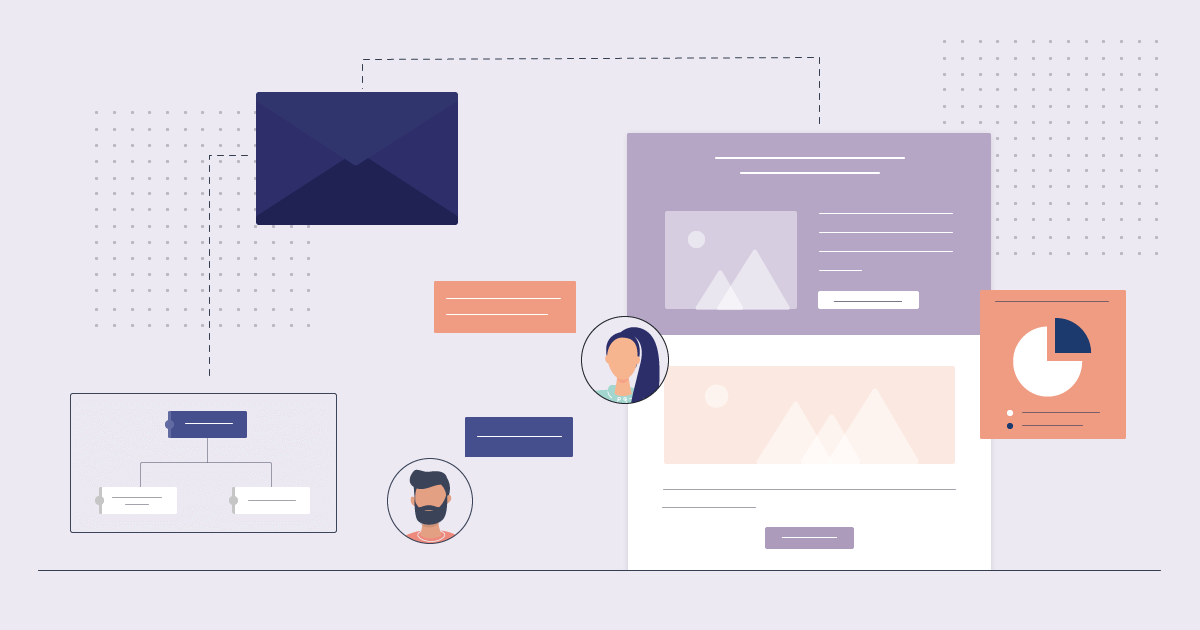
11 Effective Email Marketing Strategies For 2024
A successful email marketing campaign offers many benefits. You can stay in touch with existing and prospective customers while building personal relationships with everyone.
No wonder email remains an essential part of a digital marketing strategy.
Great email marketing doesn’t happen overnight, though. If you want high open rates and conversions, you need some effective email marketing strategies to achieve them.
In this guide, we’ll share the best ways to make email marketing more efficient, including personalization, email list segmentation, and more.
So, let’s begin!
Best Email Marketing Strategies To Consider
When crafting your email marketing content and approach, you generally want high opens and click-throughs, hopefully resulting in a high conversion rate.
This isn’t an easy task, but it gets easier when you know about effective email strategies.
So, here are some tactics to help you craft good emails to engage the right people.
Strategy #1: Personalize your email content
A little personalization goes a long way, which is why you’ll find it in every list of email marketing tips.
Statistics show personalized email subject lines generate 50% higher open rates. It gets better because personalized calls to action (CTAs) lead to a 202% higher conversion rate.
In addition, 91% of consumers say they’re more likely to do business with a company that provides offers relevant to them.
Given these stats, you’d be a fool not to use personalization everywhere you can.
It can be as simple as including the customer’s name in the opening line. Starting a promotional email with “Dear User” or “Dear Customer” doesn’t cut it. It’s too generic and feels spammy.
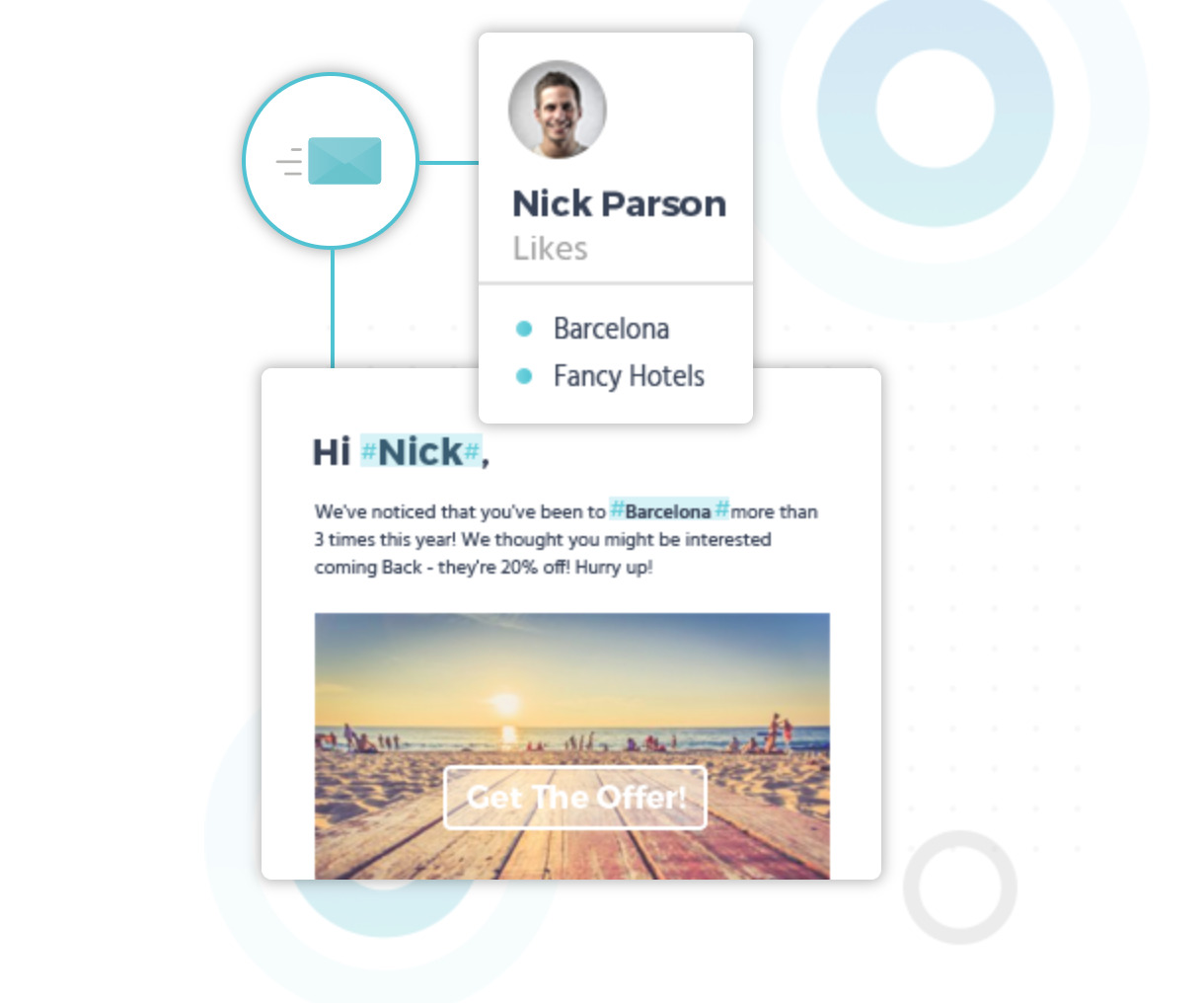
Of course, there’s no reason why you should stop with just the customer’s name. Moosend’s extensive personalization options let you personalize emails based on location and leverage AI to analyze your data and suggest the right products to your customers.
Pro tip: Pair the personalized email with a unique discount coupon to hook the customer.
Strategy #2: Segment your audience
Let’s do a little thought experiment. If you were organizing an in-person seminar about the latest e-commerce trends in your niche, would you send out the invite to everyone on your subscriber list?
You probably wouldn’t because the list contains your business partners, clients, customers, and anyone who’s ever registered for your newsletter.
Instead, you’d pay attention to how far people were from your venue and if they’d be interested in the seminar.
The process of determining the right target audience is called email segmentation. This email marketing strategy will ensure your emails are relevant and give information to the right people at the right time.
There are many ways to segment your email list:
- By demographics: segmenting your list using customer data like gender, age, location, income level, company position, etc., will help you target the right people with your offers. Gender and age are very useful to clothing retailers, while company position is essential for B2B sales.
- By engagement: tracking email metrics like open and click-through rates lets you use them to segment your audience and send targeted re-engagement emails — to people who haven’t opened your emails in over 90 days, for instance.
- By position in the sales funnel: sending the same emails to new subscribers and people who already purchased something is not an optimal strategy. For the former, you’ll want to send general emails offering various products and services. For the latter, you’ll want to determine what they’re most interested in and target that specifically.
With Moosend, segmenting your email list based on many criteria, from demographics to past-purchase times, is easy.
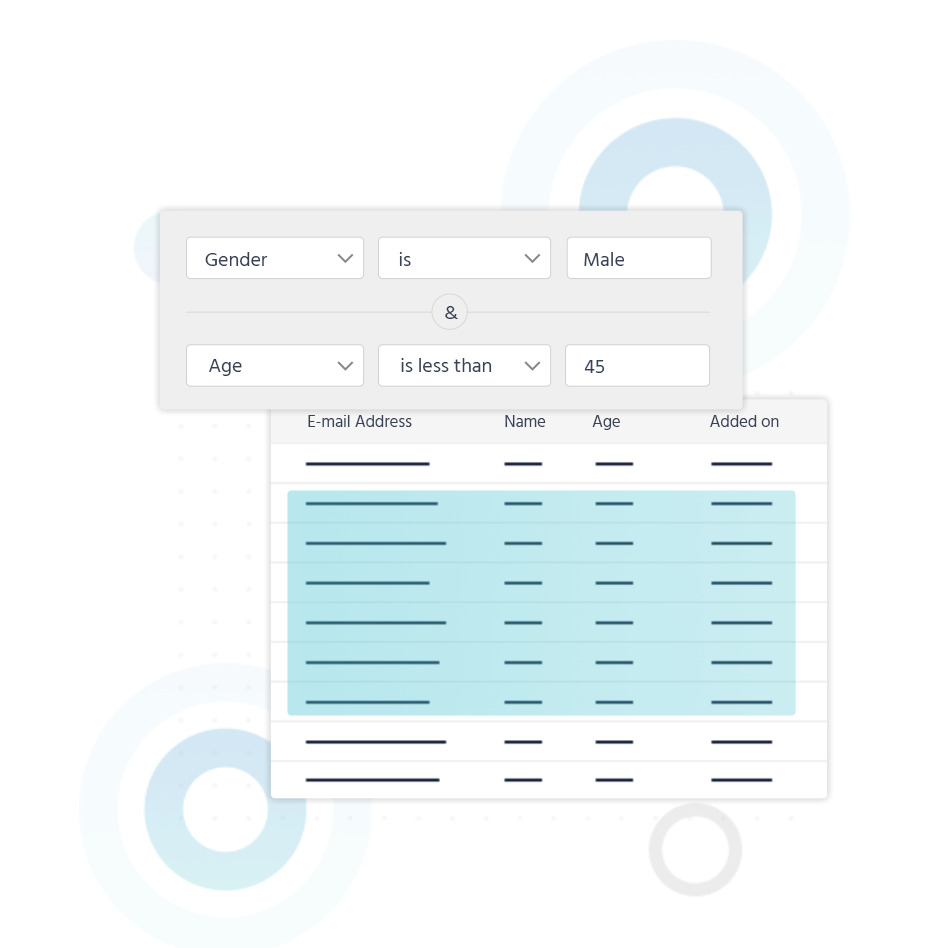
According to data, list segmentation is worth doing because segmented campaigns have 100.95% more clicks than non-segmented ones.
Strategy #3: Automate your campaigns and tasks
With so many types of emails being part of an effective marketing campaign, sending them manually would be too time-consuming.
Automation to the rescue! By using automated emails, you can streamline the email marketing process.
Welcome emails, transactional, thank you, and cart abandonment emails are typical email automation examples.
When you use an email marketing tool, you can send these automatically based on triggers describing user behavior. For instance, when someone completes the signup form for your email newsletter, you send them a welcome message.
If someone puts things in their shopping cart but then leaves, you can send them a reminder and a coupon.
Automated emails are beneficial for re-engagement campaigns too. You can send a follow-up email with a special offer to a new customer who hasn’t interacted with your emails for a few months.
With Moosend, you can set up multiple triggers, which allow your automation to start in various ways. Or, using loops, you can send recurring emails daily, weekly, or monthly.
This email marketing platform has many marketing automation recipes, but you can also make your own using a flexible drag-and-drop workflow builder.
Strategy #4: Improve your subject lines
Subject lines are arguably the most critical part of any email. According to research, 47% of people open an email based solely on its subject line.
That’s nearly half of everyone you’ll ever try to reach—from email subscribers to new or loyal customers.
A well-crafted subject line is the difference between high open and click-through rates and emails that are ignored. That’s why it is a necessary email marketing strategy to implement.
Always remember that your readers get bombarded with various types of emails day in, day out. Most inboxes are chock-full of promotions, new product offers, newsletters, and more.
To help you stand out from the noise, consider these things when writing email subject lines:
- Keep it short: 50-60 characters at most
- Use strong action words
- Put the subscriber’s name in the subject line for a personal touch
Paying attention to the subject line is a time-tested email marketing best practice you shouldn’t ignore.
Strategy #5: Educate your customers
The biggest fear of anyone running a newsletter is that the reader will grow bored of it and hit Unsubscribe. And if one person is getting bored, you can bet they’re not alone. Before you know it, the unsubscribe rates are spiking.
One of the best ways to keep readers engaged and wanting to read more is to use your newsletter to offer educational material, such as case studies.
This will position you as a thought leader in your niche. Hence, customer loyalty will increase if they see you as a trusted knowledge provider.
There’s no limit to what you can include in your newsletter — instructional videos and tutorials, interesting articles, and insightful blog posts from your corporate website.
You can engage with email content and design if you want engaging newsletters that will make a difference in your marketing efforts.
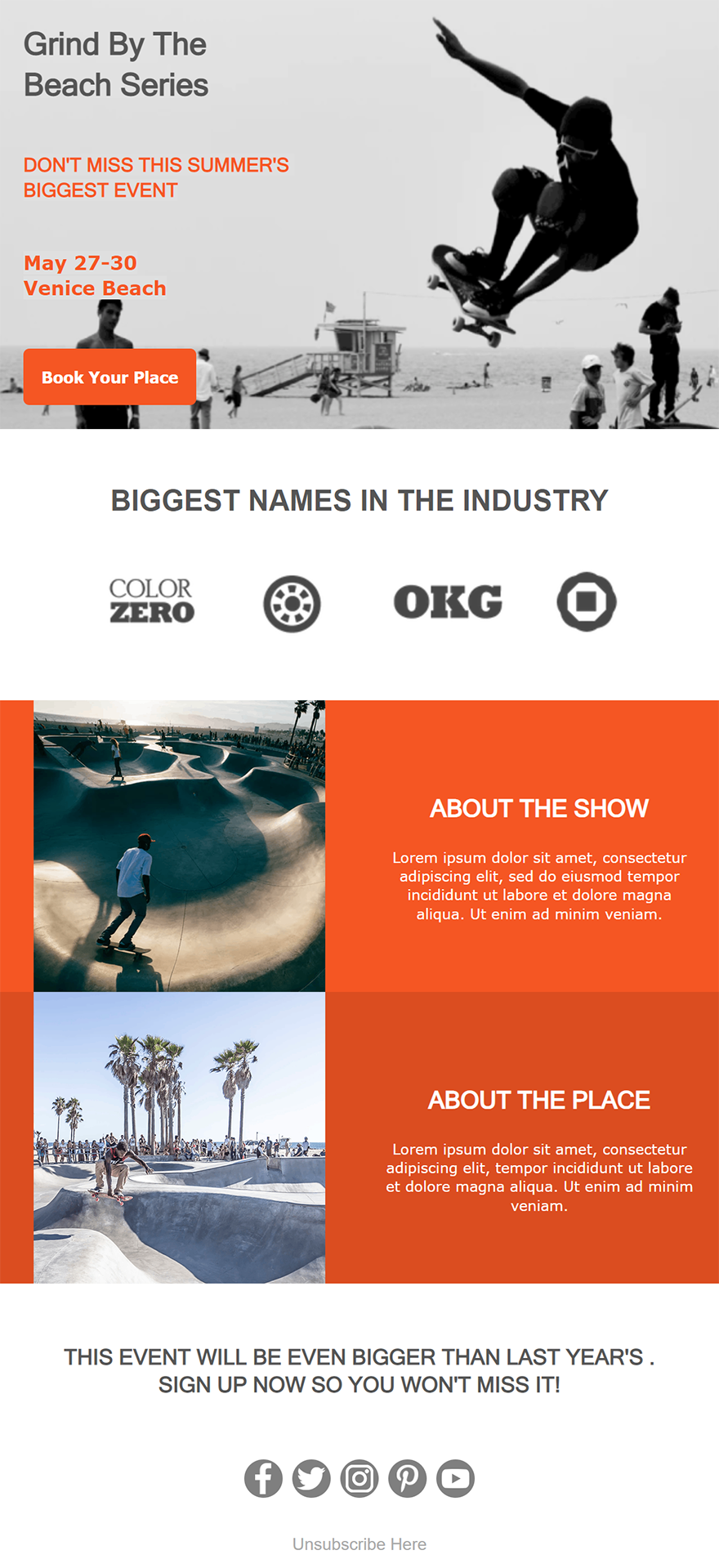
To set this email marketing strategy in motion, you can use Moosend. It has a powerful drag-and-drop editor, a built-in image picker (no more hunting for the perfect visuals), and a gallery of stunning templates.
Eye-catching email design has always been challenging to accomplish, but it’s possible with a user-friendly tool.
Strategy #6: Send emails strategically
One of the most common mistakes in email marketing is sending emails at the wrong time.
What will happen if an email hits your reader’s inbox in the middle of the night? It will sink to the bottom of the pile when all the morning emails come.
It’s best to tailor the send time to your target audience. If you’re in B2B SaaS, you’ll want to send it during work hours and midweek.
The midday, midweek approach is a favorite because it avoids the busy Mondays and hectic weekends.
However, depending on your demographics, you should experiment with other sending times.
For instance, if you’re promoting a special offer at a fast food chain, why not position it as a little end-of-workweek treat and send that email at around 4 pm on Friday?
Strategy #7: Optimize for mobile devices
Everyone has a smartphone these days. According to Exploding Topics, 92.3% of Internet users use mobile devices to access the Internet.
So you can see why 48% of all emails are opened on such devices.
Now more than ever, for every piece of information you put online — content marketing, your e-commerce site, or your emails — you need to perform mobile optimization.
There’s nothing worse than painstakingly crafting an excellent email template only for it to display incorrectly on mobile devices. Not only will the reader not be able to interact with it, but they might also think the email is spam and ignore your future communications.
There are a few things you can do to ensure a mobile email client displays everything correctly:
- Create one-column emails because they fit better on a vertical screen
- Center important text because it’s easier to read on a small screen
- Make sure the CTA button is easy to tap with the finger
- Consider a larger font size (again, small screen)
Pro tip: Remember that many email service providers (ESPs) let you see how your campaigns look on different mobile devices through the mobile preview function.
Strategy #8: Track important email metrics
You can never improve if you don’t know where you’re failing. Valid in life, true in email marketing.
Tracking various metrics will let you identify which parts of your campaign are performing well and where to improve.
The typical metrics to track are:
- Bounce rate: the percentage of addresses your email could not be delivered to. Monitoring this helps you discover issues in email deliverability that could land you on email service–provider blocklists.
- Email open rate: how many people opened your email? Tracking this will give you an insight into how your subject lines and preheaders perform.
- Unsubscribe rate: are your subscribers getting bored with your newsletter? Track this to find out.
- Signups: follow this metric to determine if your campaign drives enough visitors to your landing pages.
Keeping track of all this data can be a challenge. After all, most of us don’t have a data science degree.
That’s where Moosend can step in. Moosend tracks website interactions so you can get insight into customer behavior. It also monitors metrics such as open, click-through, and bounce rates.
Best of all, you get all these analytics in easy-to-understand and actionable dashboards.
Strategy #9: A/B test your campaign
A/B testing or split testing sends two different versions of an email to determine which works better, resulting in higher email open rates, conversions, or click-throughs.
The choice of metric to track will depend on your needs and how you prove email marketing ROI in your company.
Nevertheless, email marketing campaigns without A/B testing are never a good idea.
Testing email preheaders, subject lines, templates, email copy, and landing pages will help you create the best possible version of your email.
Strategy #10: Engage and follow up with inactive subscribers
Email list decay is one of those things you have to accept. Over time you will lose some customers and subscribers.
But there are things you can do to keep your subscribers happy and re-engage with those who’ve become inactive.
Re-engagement or “win-back” campaigns focus on getting people to interact and buy from you again. You can send a “we miss you” email and offer additional incentives like a discount.
Think of how Spotify will offer you three months for free after a while when you cancel your subscription.
Before you can make the perfect win-back campaign, you must define what inactivity means. Is it someone who hasn’t logged in or someone who hasn’t purchased anything in a while?
You’ll also need to choose a time frame. The most common choices are one, three, six, or nine months.
Strategy #11: Leverage seasonality
Christmas, Halloween, Thanksgiving, Valentine’s Day… what do all these holidays have in common? Spending money, of course.
Whether it’s for cards, presents, or big-ticket items, holidays like those mentioned above are some of the most profitable times of the year.
So why not make some great holiday templates for your email campaign to get a slice of the holiday pie?
Theming your emails with the correct colors and using appropriate emojis will get the job done and engage potential customers. This goes for any holiday, of course.
Seasons of the year are another thing you can leverage. Swimwear offers for summer, ski holidays when winter’s around the corner… you get the idea.
Of course, you’ll have to tailor your email marketing campaigns based on the seasons and holidays most fitting for your services or products.
Now that we’ve reviewed the strategies let’s see how they all work. We’ll give you examples in the next section.
3 Great Email Marketing Strategy Examples To Inspire You
“Good artists copy, great artists steal” are famous words from Pablo Picasso.
So, here are three examples of email strategies for you to steal or be inspired by.
By the way, you can find even more in our complete email marketing examples list.
Example #1: Canva
Type: B2C & B2B Educational Email Campaign Example
Goal: Share tips and help users learn how to use the tool better
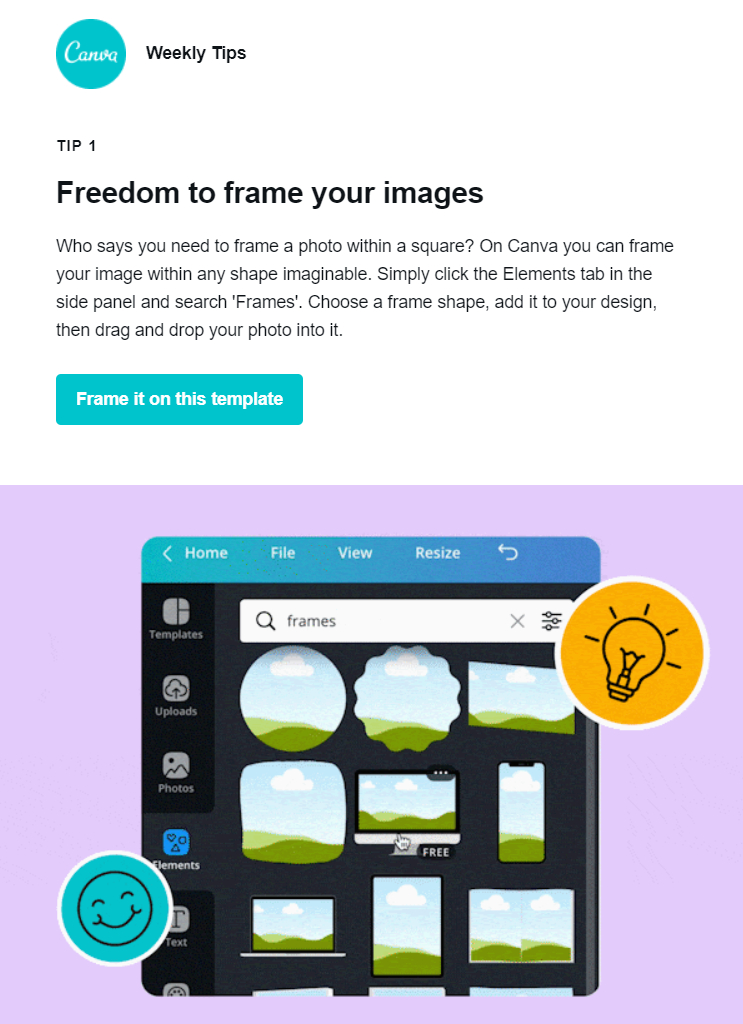
In this example, we can see how Canva educates and engages its audience simultaneously. Not everyone has the same graphic design skills, and that’s precisely what the company addresses here.
Through a nicely structured template with high-quality images and gifs, Canva offers various tips and tricks on how to use their platform. This is paired with CTAs that lead to the company’s website.
Overall, Canva manages to be informative without tiring or boring the reader and uses CTAs to allow readers to test out the tips immediately.
Example #2: Visme
Type: B2B Follow-up Email Example
Goal: Remind potential leads of the original message
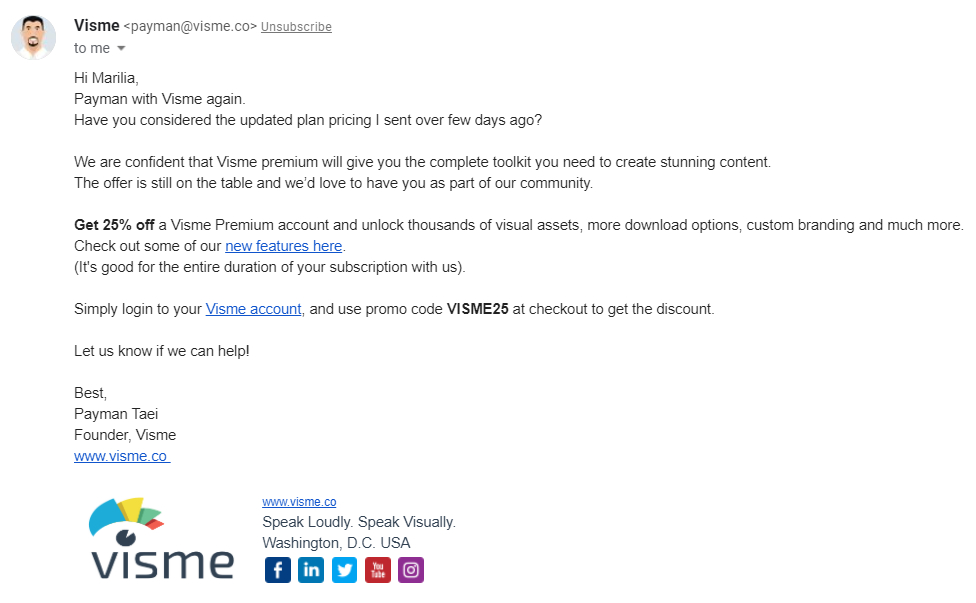
In B2B SaaS, companies must engage with potential leads as much as possible. This can mean trial extensions, special offers, and more.
At the same time, your messages shouldn’t go unread. Sending follow-up emails is a way to remind your leads of your offers and why your tool can solve their pain points.
Visme uses several elements in this campaign that reflect best practices. First, the email is personalized. This makes the message more friendly, which is essential for your email marketing strategy.
Secondly, they sent this email from a business email, not a do-not-reply address. This gives the impression of open communication and avoids the impersonality of automated emails.
Finally, Visme placed a strategic CTA to convince the reader they should get the premium version of the tool. The attached promo code seals the deal. The reader can log in, enter the code, and take advantage of the special offer.
Example #3: Netflix
Type: B2C Customer Feedback
Goal: Collect feedback to personalize the customer experience
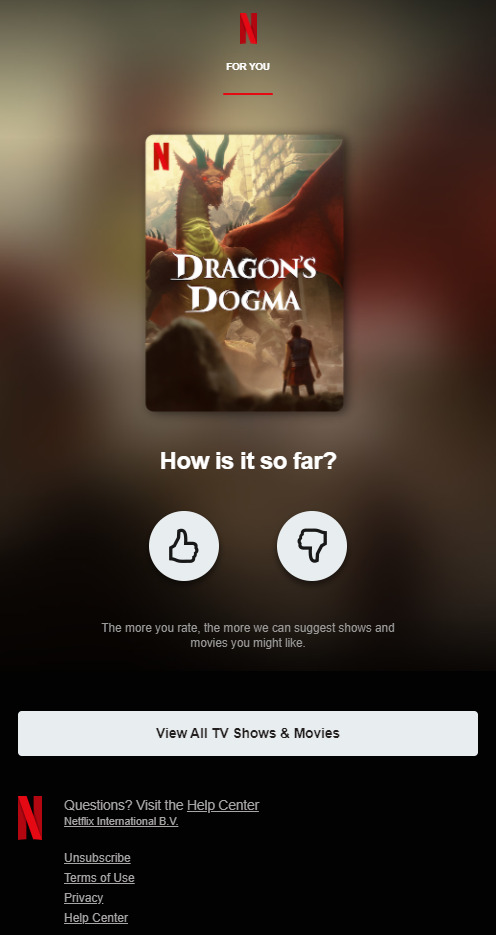
Netflix is the king of email personalization for a reason. The company is known for sending highly targeted emails to subscribers based on their watch history.
Here they take it a step further. Netflix asks the reader to rate a show they recently watched. Cleverly, there are three CTAs in this email.
The first is the rating buttons which lead the reader to the platform’s website to display a personalized message that the rating was successful. Then, there’s the View All TV Shows button.
If the reader clicks any of it, they’ll eventually get the Popular on Netflix landing page, which will automatically start previewing a movie. That’s the final CTA.
So, we can see how Netflix used very targeted personalization and several CTAs with the same goal — to get the subscribers to spend more time watching Netflix.
Now Over to You
Small businesses and giant corporations use email to attract new leads, stay in touch with existing customers, reactivate lost ones, and ensure a great return on investment (ROI).
That’s why email remains one of the most vital marketing channels, despite the first marketing email being sent back in 1978.
That was just a simple email blast, but today there are modern email marketing services like Moosend, MailerLite, or Mailchimp.
With Moosend, you can automate marketing campaigns, track actionable metrics, craft beautifully designed emails, and set your email marketing strategy in motion.
To see how it all works in practice, simply make a free account today!



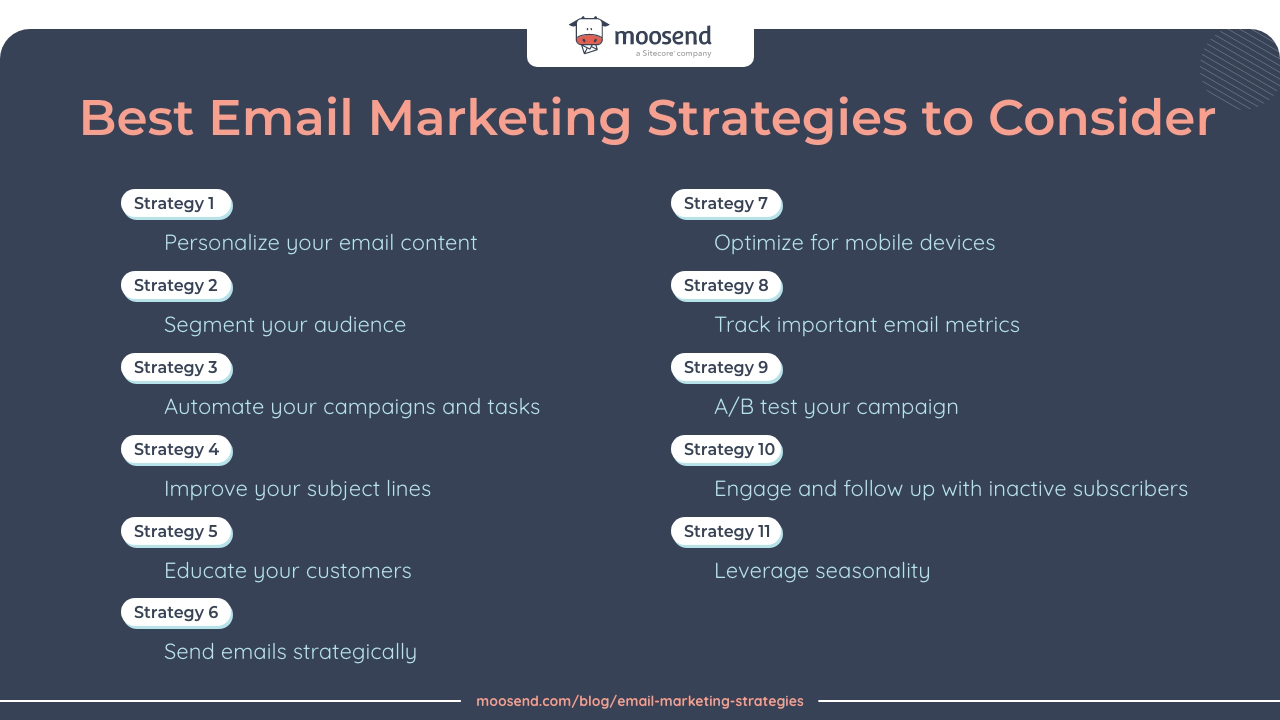

 Published by
Published by 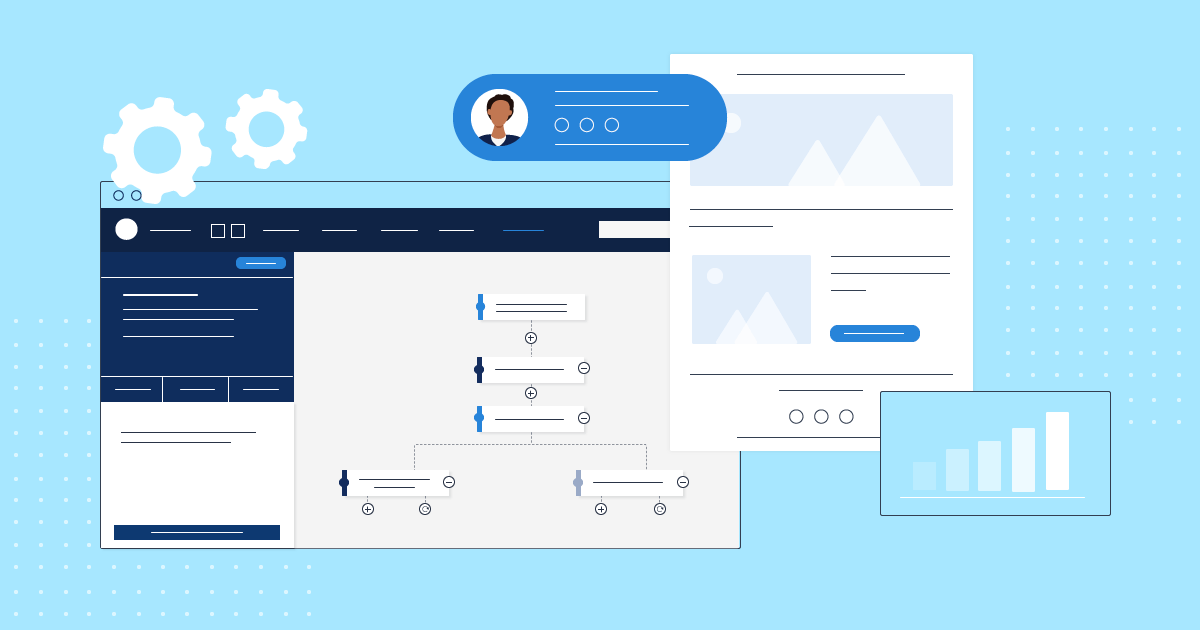
 Published by
Published by 